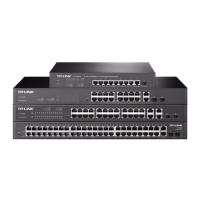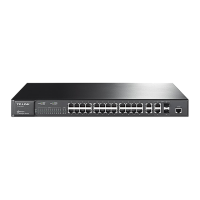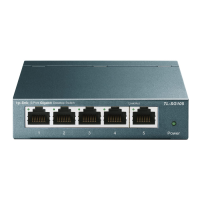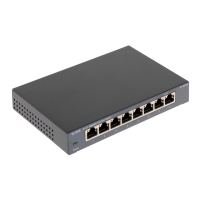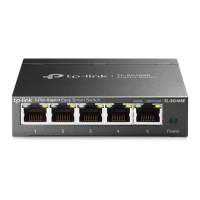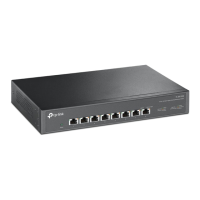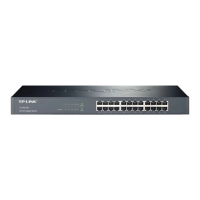TL-SL5428E
24-port 10/100Mbps + 4-port Gigabit L2 Managed Switch CLI Guide
142
source-mac-mask —— The source MAC address mask. It is required if you
typed the source MAC address.
destination-mac —— The destination MAC address contained in the rule.
destination-mac-mask —— The destination MAC address mask. It is required
if you typed the destination MAC address.
vlan-id —— The VLAN ID contained in the rule, ranging form 1 to 4094.
Ethernet-type —— EtherType contained in the rule, in the format of 4-hex
number.
user-pri —— The user priority contained in the rule, ranging from 0 to 7. By
default, it is not limited.
time-segment —— The time-range for the rule to take effect. By default, it is
not limited.
Command Mode
Global Configuration Mode
Example
Create a MAC ACL whose ID is 20, and add Rule 10 for it. In the rule, the source
MAC address is 00:01:3F:48:16:23, the source MAC address mask is
11:11:11:11:11:00, VLAN ID is 2, the user priority is 5, the time-range for the rule
to take effect is tSeg1, and the packets match this rule will be forwarded by the
switch:
TP-LINK(config)# acl create 20
TP-LINK(config)# acl rule mac-acl 20 10 op permit smac 00:01:3F:48:16:23
smask 11:11:11:11:11:00 vid 2 pri 5 tseg tSeg1
acl rule std-acl
Description
The acl rule std-acl command is used to add Standard-IP ACL rule. To delete
the corresponding rule, please use no acl rule std-acl command. Standard-IP
ACLs analyze and process data packets based on a series of match conditions,
which can be the source IP addresses and destination IP addresses carried in
the packets.
Syntax
acl rule std-acl {acl-id} {rule-id} [op { discard | permit }] [[sip source-ip] {smask
source-ip-mask}] [[dip destination-ip] {dmask destination-ip-mask}] [tseg
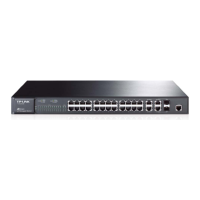
